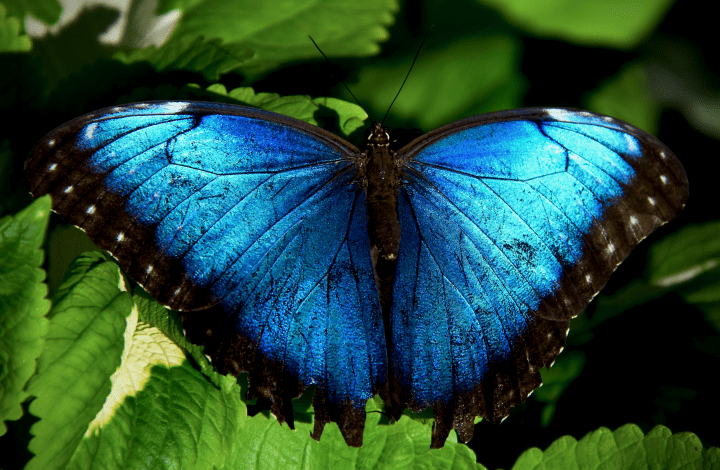Explore resources for teaching about physical science and structural color using the story of how butterfly wings inspired paints without pigment.
The Story
The Blue Morpho butterfly is famous for its brilliant blue wings. But the Blue Morpho gets its color not from blue pigments, but from structure. Tiny scales on the butterflies’ wings have even tinier nano-scaled ridges that reflect and diffract light waves that hit the surface of the wing. As incoming light waves hit the wing, they bump into each other in a way that causes the blue colors (wavelengths) to be intensified, while other colors are canceled out. This phenomenon is known as “structural color” and it can be observed in many species of butterflies and beetles as well as birds’ feathers, such as the peacock.
Engineers have developed paints and reflective coatings that use this same principle to create brilliant colors without added pigments. Two examples are ChromaFlair Color Shifting Pigment from Viavi and Cypris Materials.
Biological Strategy and Innovations
Learn more about the Blue Morpho and the innovations it has inspired on these AskNature pages.
Recommended Teaching Resources
Use these resources to engage students in this topic and make connections to physical science and nanotechnology.
Zoom Into a Blue Morpho Butterfly Wing
In this narrated video we zoom into the nanostructures that manipulate light on a Blue Morpho butterfly wing. Beginning with a digital camera and using progressively more powerful microscopes we finally see the wing under a scanning electron microscope showing the 200 nanometer structures that produce the beautiful blue iridescent color of the Blue Morpho.
Created by NISE Network (CC BY-NC-SA 3.0 US) View Source
Cypris Materials Video
Watch how Cypris Materials was inspired by butterfly wings to developed a structural color coating in this short animated video.







